As ‘The Conversation’ Turns 50, It’s Time to Acknowledge It as One of Francis Ford Coppola’s Masterpieces
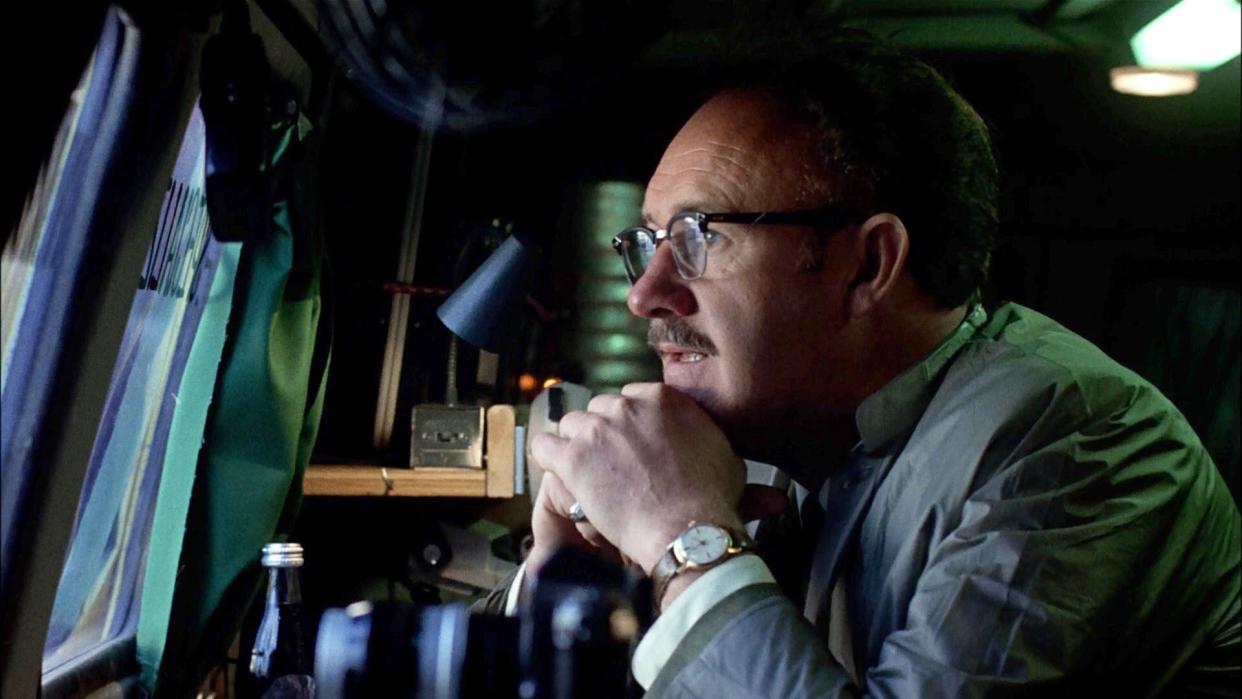
- Oops!Something went wrong.Please try again later.
- Oops!Something went wrong.Please try again later.
- Oops!Something went wrong.Please try again later.
- Oops!Something went wrong.Please try again later.
- Oops!Something went wrong.Please try again later.
Until recently, if one were asked to name some of the best films of preeminent 1970s filmmaker Francis Ford Coppola, it would be easy to pick the big hits. “The Godfather” (1972), “The Godfather II” (1974) and “Apocalypse Now” (1979) are definitely his most iconic and respected films. You’d also be hard-pressed to find a person aged 25-50 who isn’t keenly aware of his adaption of S.E. Hinton’s mandatory high school assigned “The Outsiders” (1983) or his classics “Peggy Sue Got Married” (1986) and maybe even “Tucker: The Man and His Dream” (1988). Yet lately, Coppola’s “The Conversation” (1974) has entered the chat as a somewhat under the radar, low-key masterpiece from the filmmaker, and this year the film celebrates its 50th birthday.
After honing his directorial chops on films like the Roger Corman-produced horror film “Dementia 13” (1963) and fledgling films like “You’re a Big Boy Now” (1966), “Finian’s Rainbow” (1968) and “The Rain People” (1969) writer/director Francis Ford Coppola’s popularity exploded in 1972 with the unexpected smash hit “The Godfather,” a huge studio-backed film that no other filmmaker at the time wanted to make. Coppola needed the buffer of a bigger studio budget to help both his career and his merry band of maverick San Francisco Bay Area-based filmmakers.
More from IndieWire
'Joker: Folie à Deux' Teaser Trailer: Lady Gaga Is Corrupted by Unhinged Joaquin Phoenix
Bong Joon-Ho's Zany Sci-Fi 'Mickey 17' Kills Robert Pattinson Over and Over - and Slays CinemaCon
After feeling disappointment with his experience with Warner Bros. on “Finian’s Rainbow” as well as where his career was going, plus a desire to be more independent and make smaller, personal films, Coppola got together with fellow up-and-comers John Korty, John Milius, Walter Murch and George Lucas (to name the better known of the group) to form their own production company American Zoetrope, based out of San Francisco. The idea was that they could make films they wanted to make without the heavy shadow cast by studios at the time. And, it kind of worked. Coppola was first out of the gate with “The Rain People” followed by Lucas’ “THX 1138.” While the former did modest business, it was Lucas’ futuristic film that baffled both filmgoers and critics alike, thus setting back the momentum of American Zoetrope and nearly tanking the upstart production studio.
Thus, just when Coppola thought he might be out of the studio game, they pulled him back in with “The Godfather.” To say the film was a hit would be an understatement. Not only did it prove to be a box office smash, the film also won Best Picture at the 1973 Oscars as well as seeing star Marlon Brando take home Best Actor and Coppola winning Best Adapted Screenplay alongside Mario Puzo who wrote the novel the film was based on and co-wrote the script. Coppola became the “it” director and rather than dive headlong into another studio film, Coppola stuck to his ideals and sought a smaller, more introspective film before inevitably tackling “The Godfather II.” That film became “The Conversation” starring Gene Hackman. The fact Coppola squeezed “The Conversation” in between the two “Godfather” films is just one of many marvels surrounding the film.
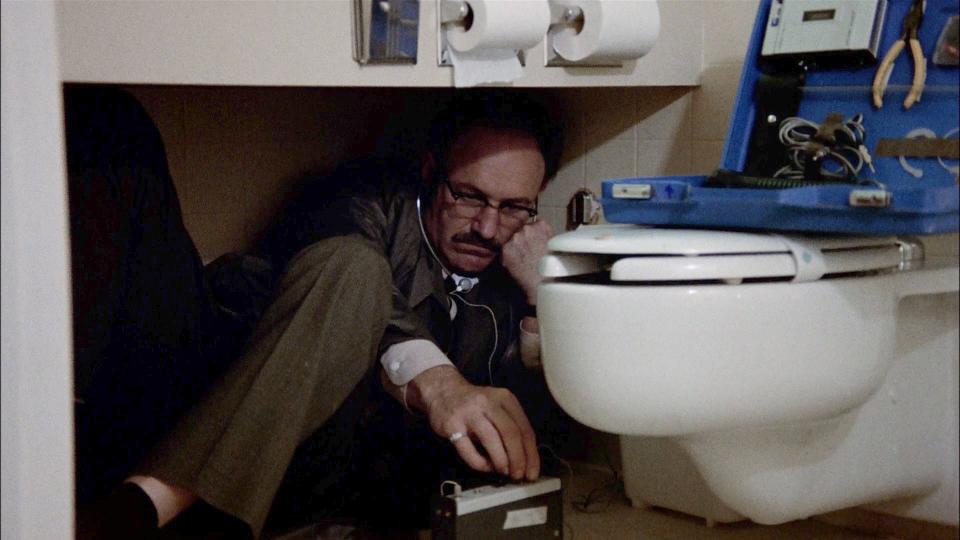
The germ of “The Conversation” was formed following an, ahem, conversation with filmmaker Irvin Kershner (“The Empire Strikes Back”) about the advancements in microphones that could surreptitiously record people talking from great distances. Coppola started developing an idea based around the technology, but he also was itching to make a smaller film, thus he started fleshing out the film focusing on a character who was a high-caliber professional, incredibly skilled in the use of sound recording, using it to spy on people. As a devout cinephile, Coppola was also enamored with Michelangelo Antonioni’s 1966 art-house hit “Blow-Up,” a film that “The Conversation” shares many notions.
In an excellent article for WBUR, critic Sean Burns notes another important idea that led Coppola to the film. Burns writes, “Coppola has said he got the idea for Harry’s dilemma after hearing about film editors who fall in love with leading ladies they’ve never met, smitten by spending all day with their footage.” Coppola clearly marries these notions altogether and stays true to his idea about wanting to make small, more personal and character-based films.
The basic plot of “The Conversation” is as follows: Gene Hackman stars as Harry Caul, a surveillance expert (or, as one character explains it, “the best bugger on the West Coast”) who is hired by a shadowy figure to record a conversation between a young couple (Frederic Forrest and Cindy Williams who had also appeared in Lucas’ “American Graffiti” the year before) in San Francisco’s Union Square. This is a tricky operation that requires several microphone operators in various areas around the Square as the couple is walking and talking. Caul will then take all the separate recordings, combine them into one continuous take and turn over the final product to a middleman (Harrison Ford) who works for the mysterious director (Robert Duvall) of a large corporation.
The scene is brilliantly constructed as we see all the machinations play out, almost like a ballet, with sound dipping in and out as the characters move to different areas, encounter outside noises as well as and try to speak in low tones. All the way, Caul’s team is set up in the square, both in disguise and in the surrounding area and on rooftops. As we, the viewers, glean information from the couple, it becomes fairly obvious the two are likely secret lovers or maybe political conspirators or both. The somewhat vague nature of their talk and relationship only adds to where the plot soon goes. It’s definitely worth noting here is that this scene in the film was filmed by Haskell Wexler, who was then soon fired from the production due to a conflict with Coppola. He was replaced by Bill Butler.
In a 2016 interview, Walter Murch, who is a real MVP of the film, serving as sound designer and supervising editor, detailed what led to the rift between Wexler and Coppola.
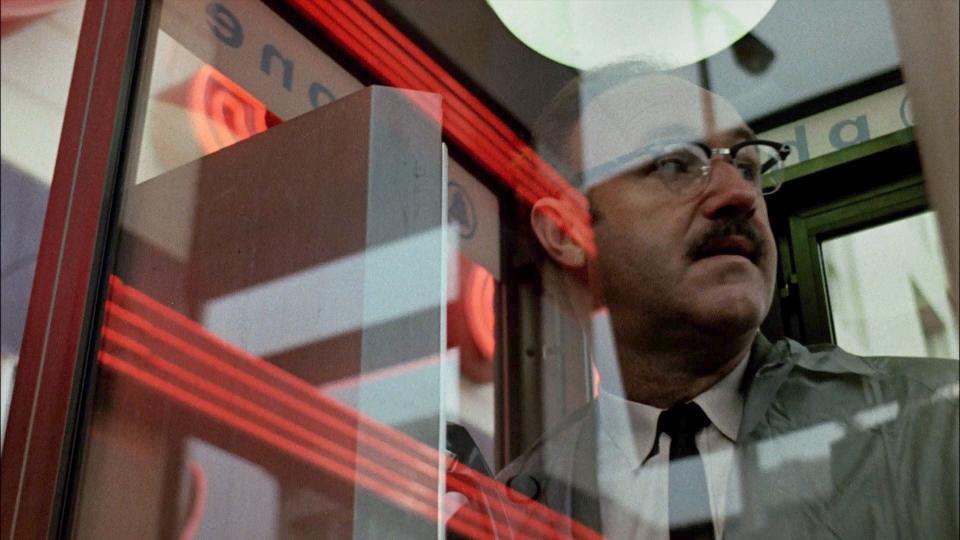
Said Murch, “Haskell was one of the world’s great cinematographers and he had a definite strong personality and was not afraid of expressing his personality strongly. And that naturally came in contact with Francis, who has a similar strong personality.” Murch continued, “Bill Butler is more accommodating. He’s a perfectly wonderful cinematographer but his personality is: yes, let’s make it work. And not, you know, he’s more concerned with what is actually right in front of us, rather than these other issues, whatever they might be.”
While both Butler and Wexler received cinematographer credits, Wexler’s scene remains the crux of the rest of the film as Caul becomes more deeply involved in the recording and its potential meaning and consequences. The more he assembles the conversation, the more he begins to suspect that the couple’s lives may be in danger.
The way Caul becomes obsessed with digging deeply into his recorded conversation is a tip of the hat to Antonioni’s “Blow-Up” (1966) as in that film, the main character is a fashion photographer (David Hemmings) who accidentally photographs what he slowly comes to believe is a murder. The more Hemmings’ character enlarges the photo, the more he becomes lost in what he’s really seeing as well as what may have actually been nabbed in the photo.
Similarly, Caul begins to perseverate over the recording. While on the surface, Hackman’s characterization is of a cold and calculated professional, the more he digs in on what he thinks he’s hearing, the more this gives rise to his own sense of guilt over a previous paid gig that resulted in the death of the subjects. Caul’s paranoia intensifies as he grapples with the moral implications of his work and the consequences of his actions and career.
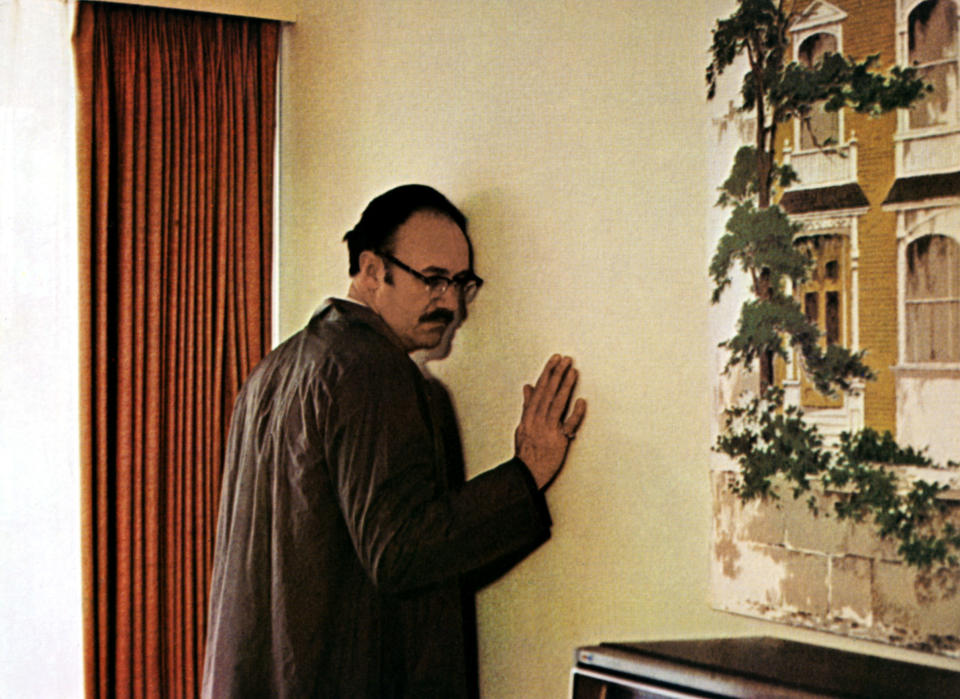
It’s fun to note that Brian DePalma, Coppola’s good friend and fellow movie nerd visited terrain similar to both “The Conversation” and “Blow-up” in his essential film “Blow-Out” in 1981, making the three films a sort of conversational triptych. Tony Scott’s 1998, Will Smith/Gene Hackman starring “Enemy of the State” also owes a debt of gratitude to these films but is more of a crowd-pleasing blockbuster than the other, more understated character studies.
In a 2022 interview with GQ, Coppola spoke of his affection for “Blow-Up” saying “I had loved that movie of Antonioni’s, “Blow-Up.” When I saw it, I just thought, I want to make a movie like that. That’s the kind of movie I want to make because, it was intriguing and it was moving and it was mysterious.”
With all this talk of influences on the film, perhaps the idea that the film was influenced by Watergate has sprung to mind? While there are definitely connections between “The Conversation” and the Watergate spying scandal, the idea for the film came about in the late 60s with a first draft being written in 1970 and a shooting script hitting desks in late 1972. The initial Watergate break-in didn’t happen until the summer of 1972, and it didn’t really escalate into a full political scandal until 1973 when the film was already in the process of being shot. Another surprising fact about this small, surprising film.
While “The Conversation” wasn’t influenced by Watergate, film critic and scholar Mark Feeney, in his book “Nixon and the Movies,” contends “no other film is so atmospherically Nixonian” in terms of the paranoia and attempts to cover up who saw and heard what.
In an article for Slate, running in a series of articles for the “Slate’s Conspiracy Thriller Movie Club,” critic Jonathan Kirshner takes this idea further writing “Harry Caul certainly has a lot of Nixon in him; wary of truth-telling, socially awkward, self-isolated, prone to obsession, and dysfunctionally paranoid, Harry is destroyed by his own tape recordings. But that is too easy, and it is a mistake to run too far with these parallels. Harry is really done in by the crushing weight of his own sense of guilt and responsibility. This was not one of Nixon’s problems. “The Conversation” resonates, then and now, not as an indictment of the disgraced president but as one small, brilliant Nixonian nightmare.”
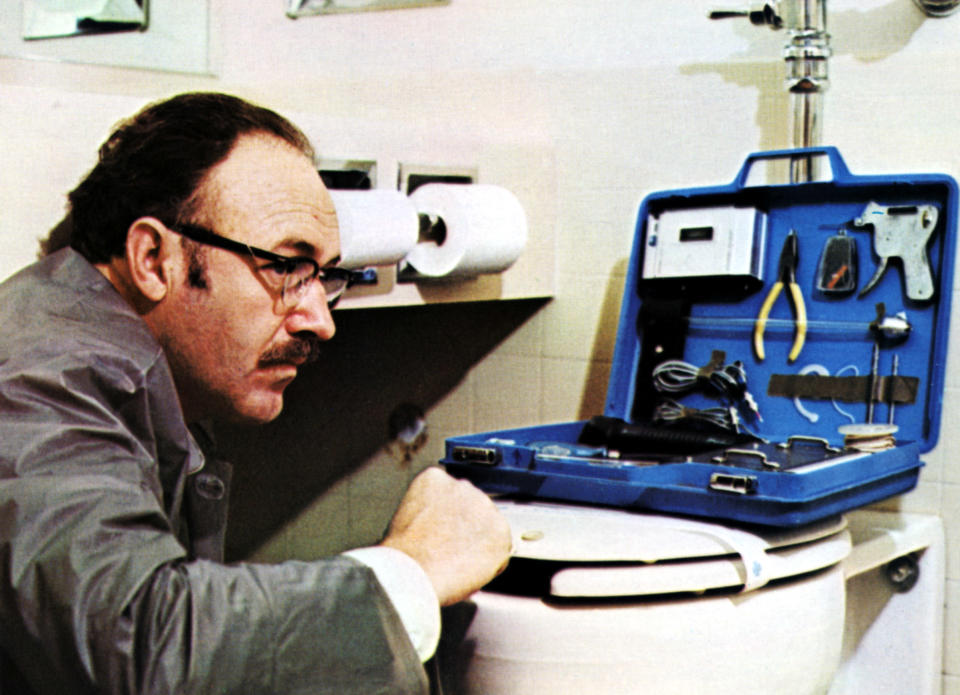
Of interest here is the line about the film being a small, brilliant Nixonian nightmare as again, the plot about the sound recording is almost a Hitchcockian “MacGuffin” in that while it adds to the thriller aspect of the film, what Coppola is most interested in is the Caul character and his lone wolf lifestyle which leads to ever-increasing secrecy — even toward his long-suffering right-hand man Stan, played by the always outstanding John Cazale.
Throughout the first act of the film, Stan constantly tries to treat Harry as a friend, only to be rebuffed more bitterly as the film progresses. The relationship becomes more and more combative until Harry finally loses it a bit on Stan for taking the Lord’s name in vain. The relationship deteriorates to the point of Stan taking a job alongside Harry’s rival, the east coast “bugger” Bernie Moran (a perfectly sleazy Allen Garfield).
Eventually Caul cracks under the pressure of his guilt and the potential repercussions of his work. His paranoia causes him to tear apart his apartment, looking for a listening device before sort of melting into a puddle of his own loneliness and remorse. It’s a dark ending to a dark film.
The editing, particularly the intricate sound design created a long process, as did Coppola leaving to direct “The Godfather II.” When “The Conversation” finally hit audiences, it was at a 1974 Cannes premiere where it won the Palme d’Or, further igniting the rocket blast career of Coppola. Yet in another serendipitous turn of events, both “The Conversation” and “The Godfather II” hit theaters in 1974 with Coppola then going on to be nominated for Best Director for both films in 1975 before beating himself to take home the gold for “The Godfather II.”
“The Conversation” is a strange little film with an outstanding cast featuring a script and direction by a filmmaker at the height of his career. It could also be argued that between it and “The Godfather II,” this was the calm before the tumult of Coppola’s most personally and professionally challenging films, “Apocalypse Now” (1979), “One From the Heart” (1982) and “The Cotton Club” (1984) dented the armor of a rising filmmaker.
Best of IndieWire
The 12 Best Thrillers Streaming on Netflix in April, from 'Fair Play' to 'Emily the Criminal'
Quentin Tarantino's Favorite Movies: 61 Films the Director Wants You to See
Sign up for Indiewire's Newsletter. For the latest news, follow us on Facebook, Twitter, and Instagram.

